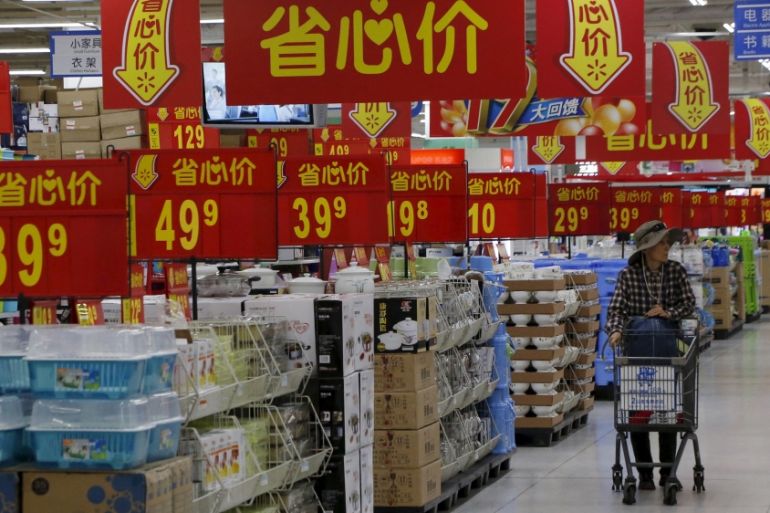Clouds gathering over East Asia’s economic horizon: World Bank
The lender cuts its growth forecasts for the region as trade tensions linger, hurting consumer demand and manufacturers.

Trade wars, China’s slowdown and even Brexit could all weigh on the economies of developing countries in East Asia over the next two years, the World Bank said on Thursday.
“Downside risks identified in April 2019, including the protracted trade tensions, weaker global demand, and a slowdown of manufacturing activities, have materialized or intensified,” the bank said in its latest report.
Keep reading
list of 4 items‘We share with rats’: Neglect, empty promises for S African hostel-dwellers
Thirty years waiting for a house: South Africa’s ‘backyard’ dwellers
Photos: Malnutrition threatens future Afghan generations
The lender cut its economic growth estimate for the region to 5.8 percent this year from its earlier forecast of 6 percent. Growth in gross domestic product (GDP) next year and in 2021 is expected to be 5.7 percent and 5.6 percent, respectively, both also lower than its April projections.
“A protracted trade dispute could lead to a reconfiguration of the global trade landscape that would entail both risks and opportunities for the region’s developing economies,” it added.
The United States and China have slapped tariffs on hundreds of billions of dollars of each other’s exports. High-level trade talks are set to take place in Washington, DC on Thursday and Friday.
A major risk to East Asia is China’s slowing economy, the World Bank said. It is projected to grow by 6.1 percent this year, down from 6.8 percent in 2018. China is a top trading partner for many of the region’s export-driven economies.
“Smaller economies in the region are especially dependent on commodity exports, and tourists and direct investments from China,” it said.
The bank also said the United Kingdom’s departure from the European Union could be a drag on East Asia.
“A disorderly Brexit could weaken the trade link between the region and the United Kingdom, with some smaller economies in the region potentially losing preferential access and facing much higher tariff rates to enter the UK market.”
The pace of poverty reduction could be adversely affected as East Asian economies slow down. The proportion of the region’s people living below $5.5 a day is expected to be 24 percent this year, higher than the bank’s April projection of 23.7 percent.
The deceleration could also hurt countries with high debt levels. As central banks cut interest rates to offset the slowdown, more people and companies may be encouraged to borrow, adding to their already high debt pile. Malaysia and Thailand have particularly high levels of household debt, it said.
Among the most vulnerable countries in the region are Pacific Island countries (PICs) such as Samoa, the Marshall Islands, Tuvalu and Kiribati.
“PICs face substantial risks of declines in revenue growth, including through the depletion of fishery and forestry resources … Managing natural resources while safeguarding the environment is a priority if the PICs are to increase resource revenues in a sustainable manner,” the bank said.